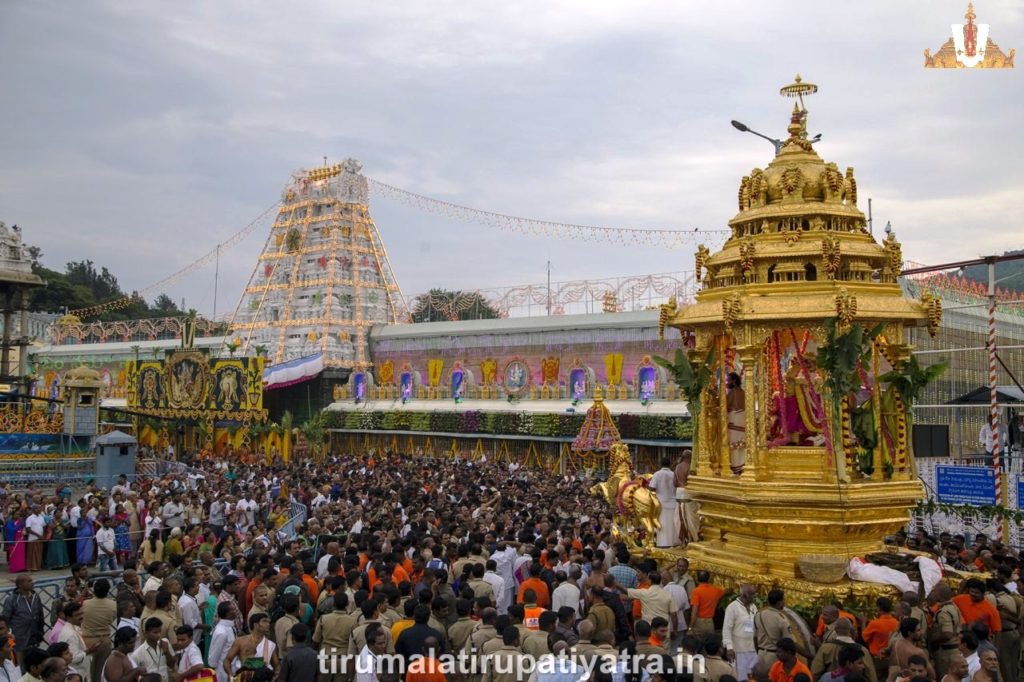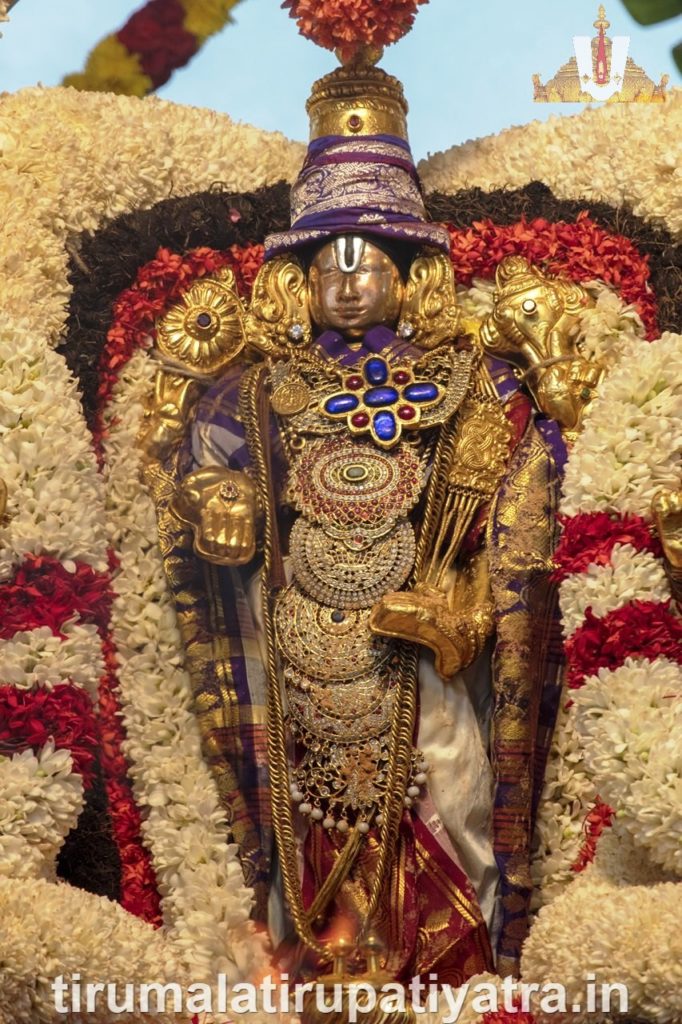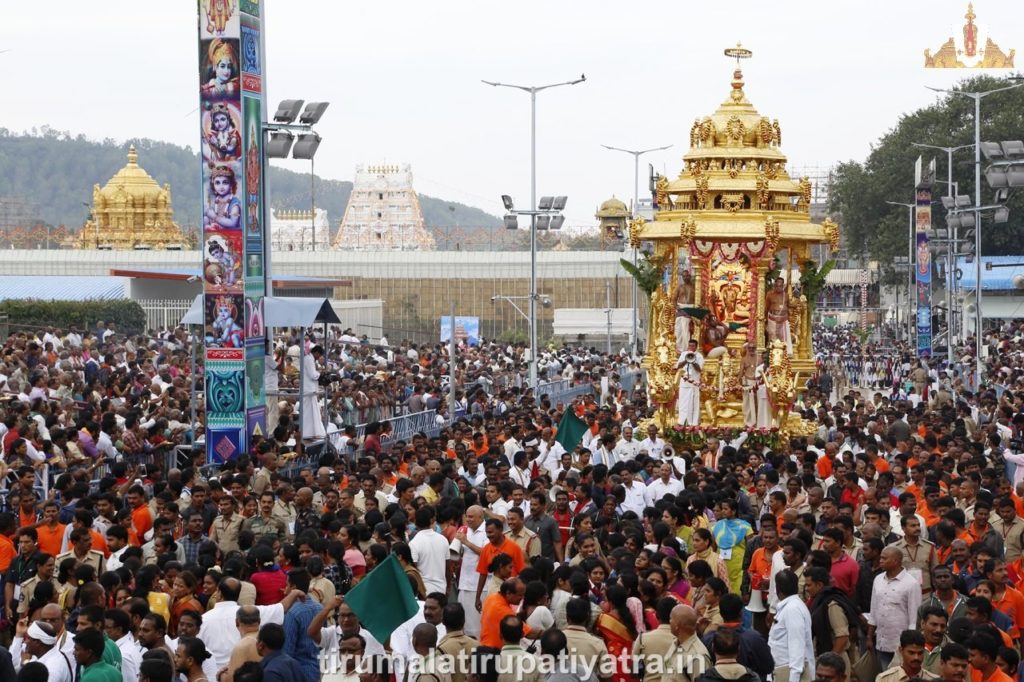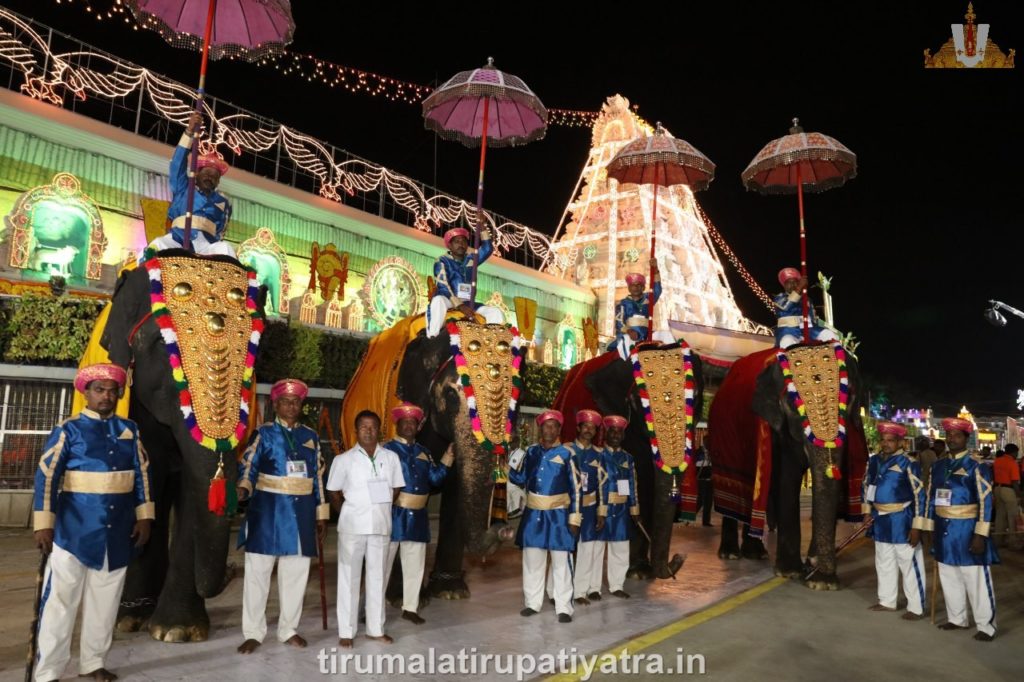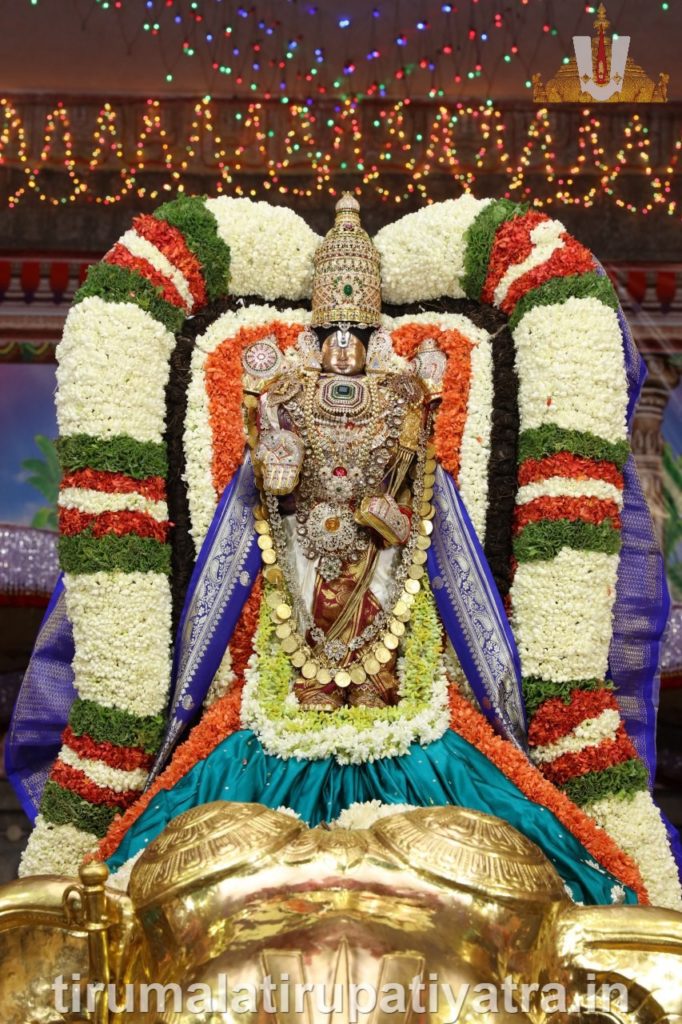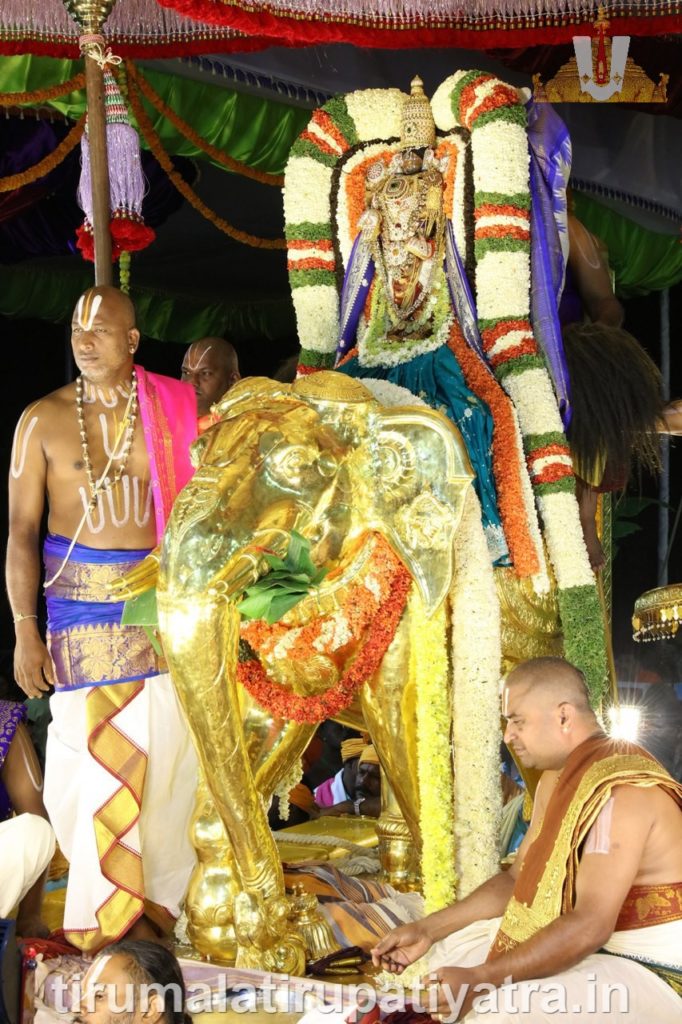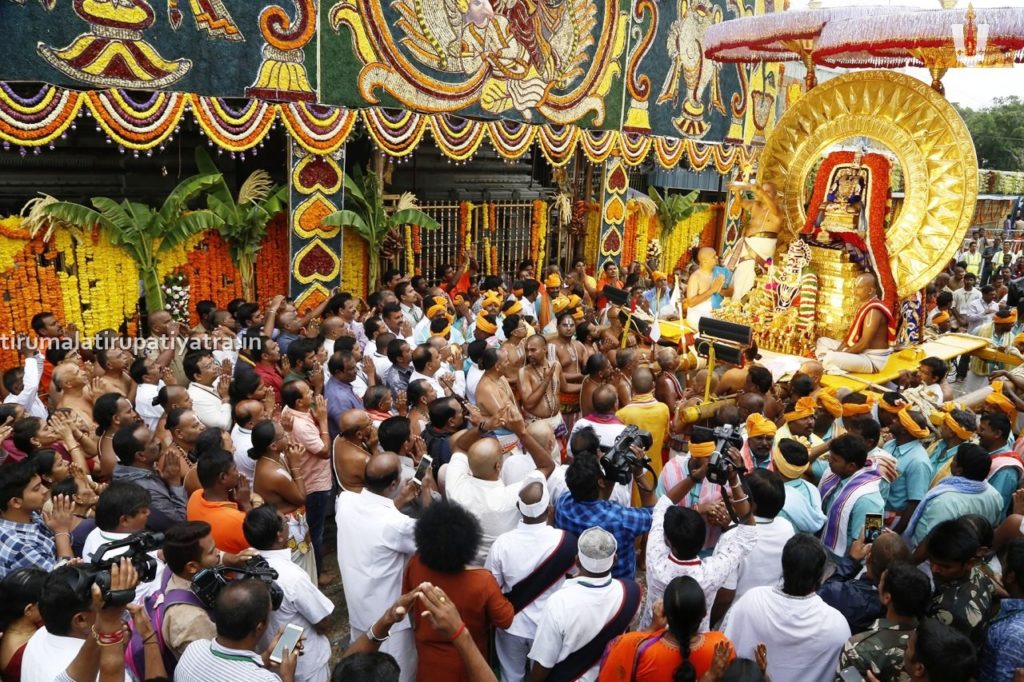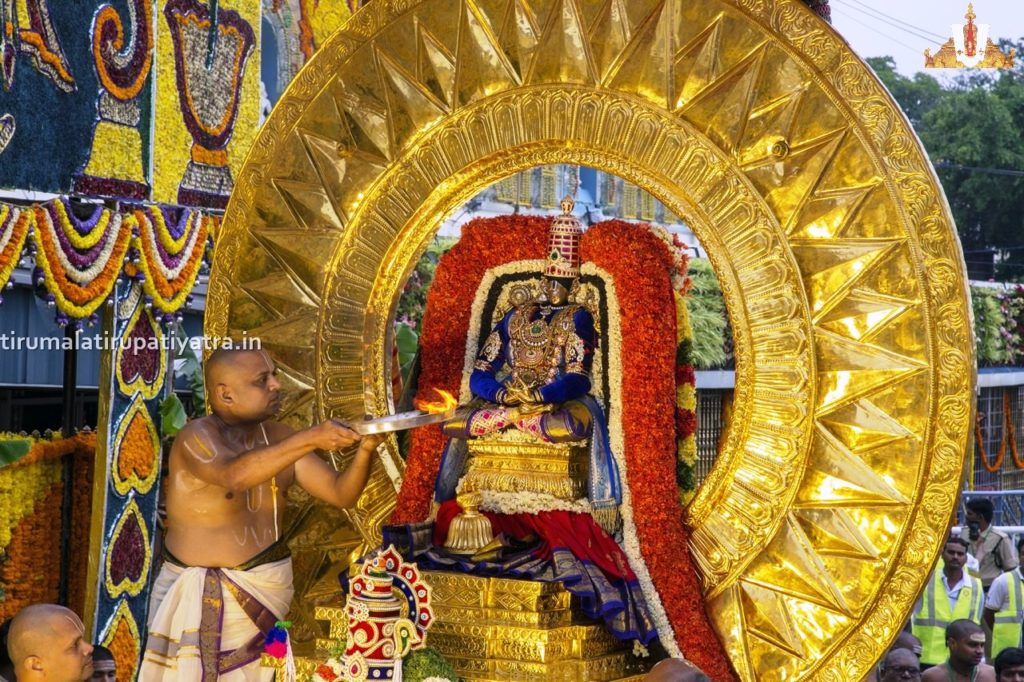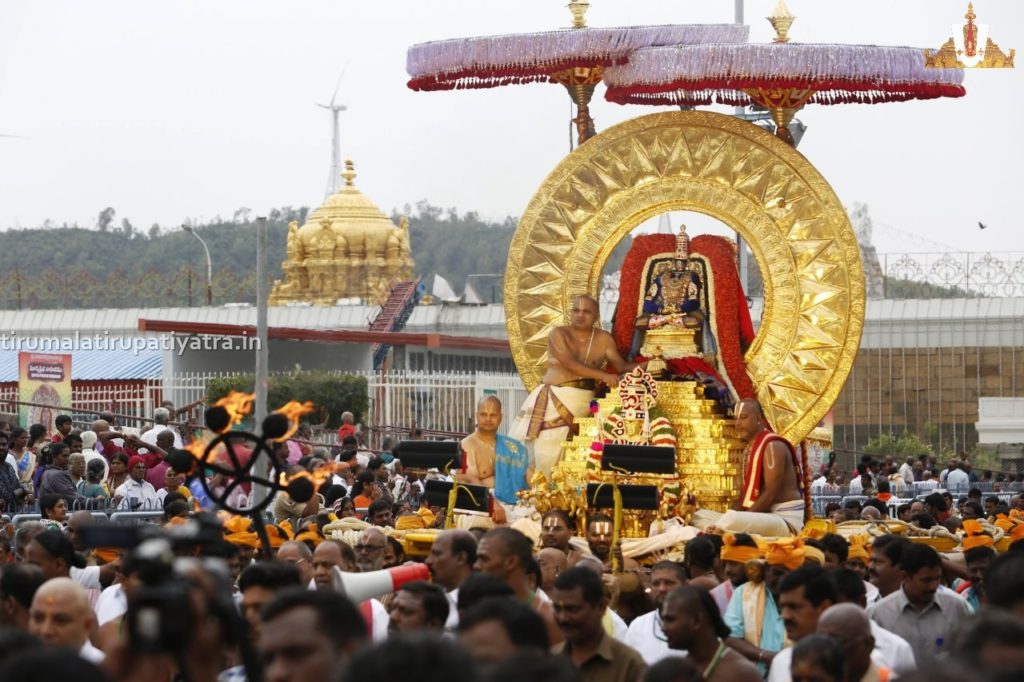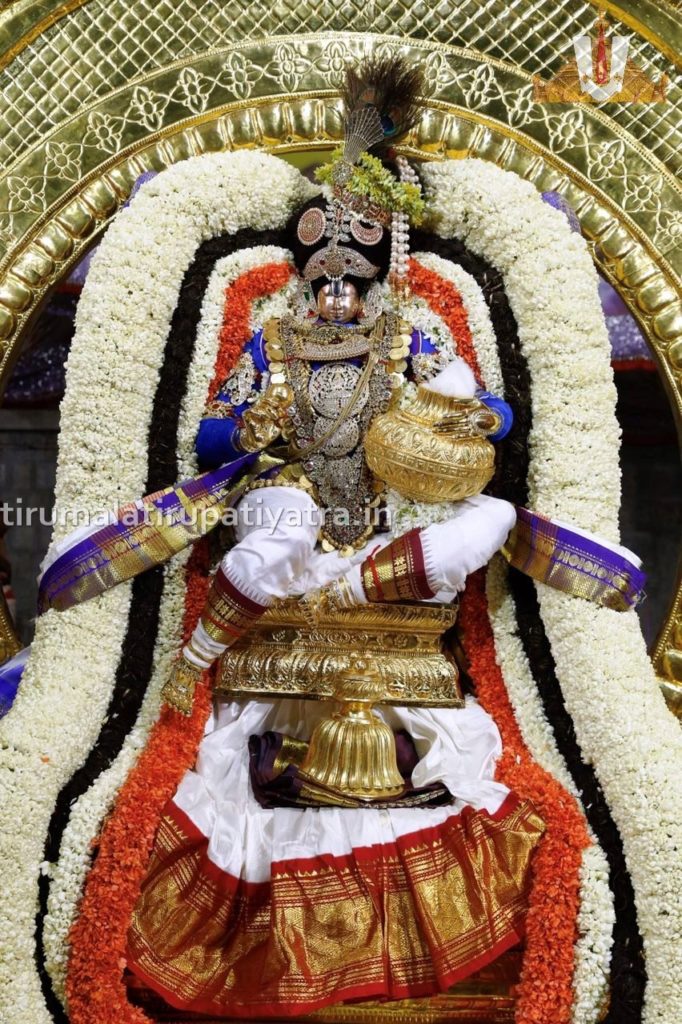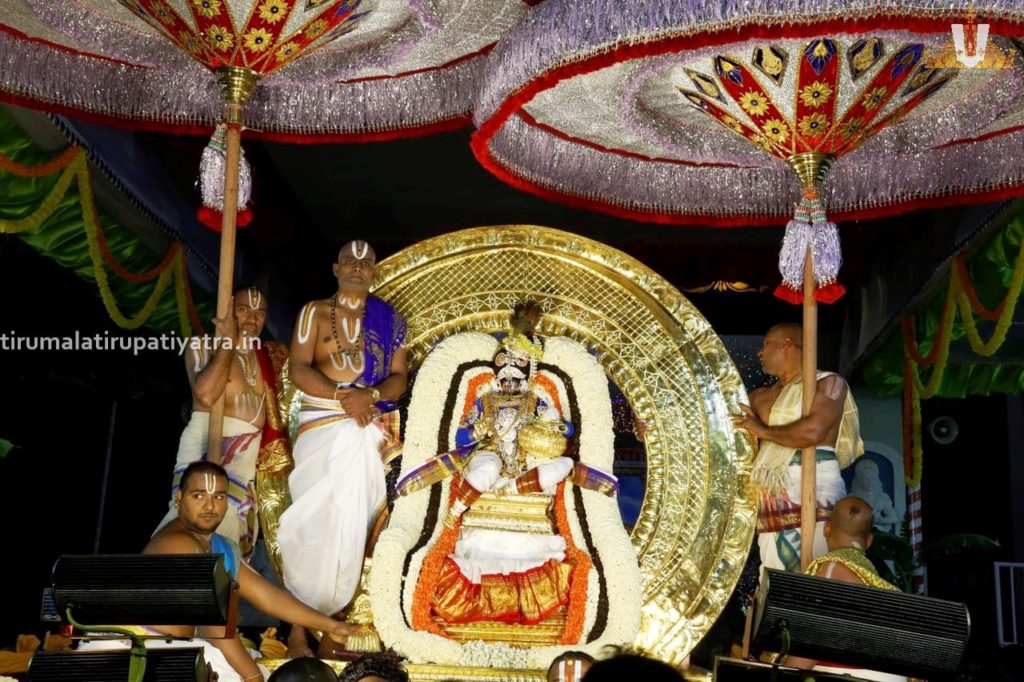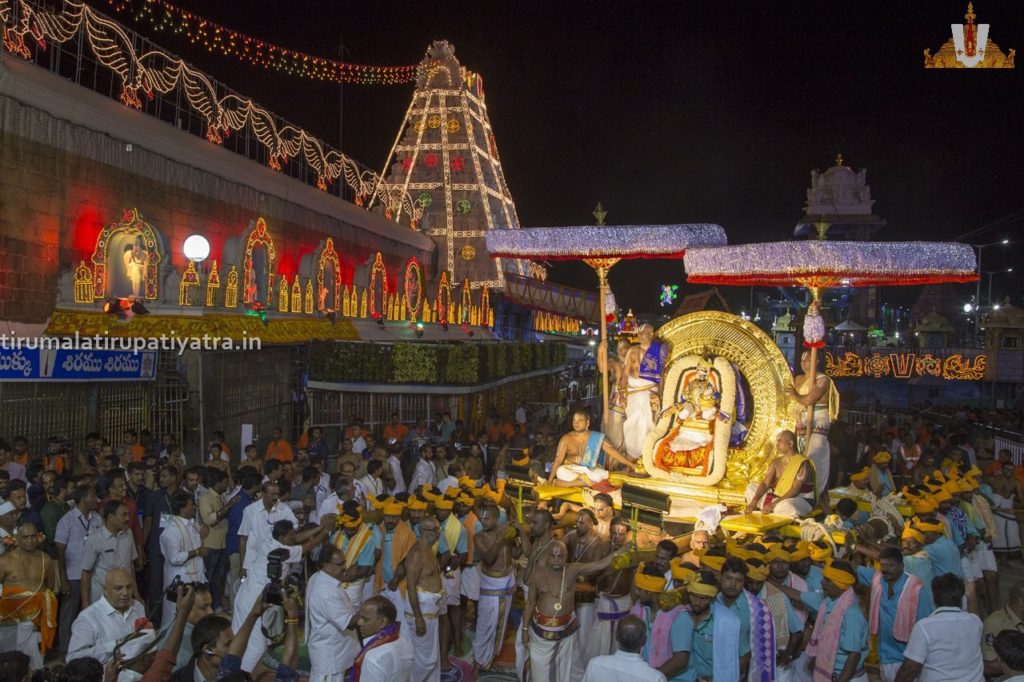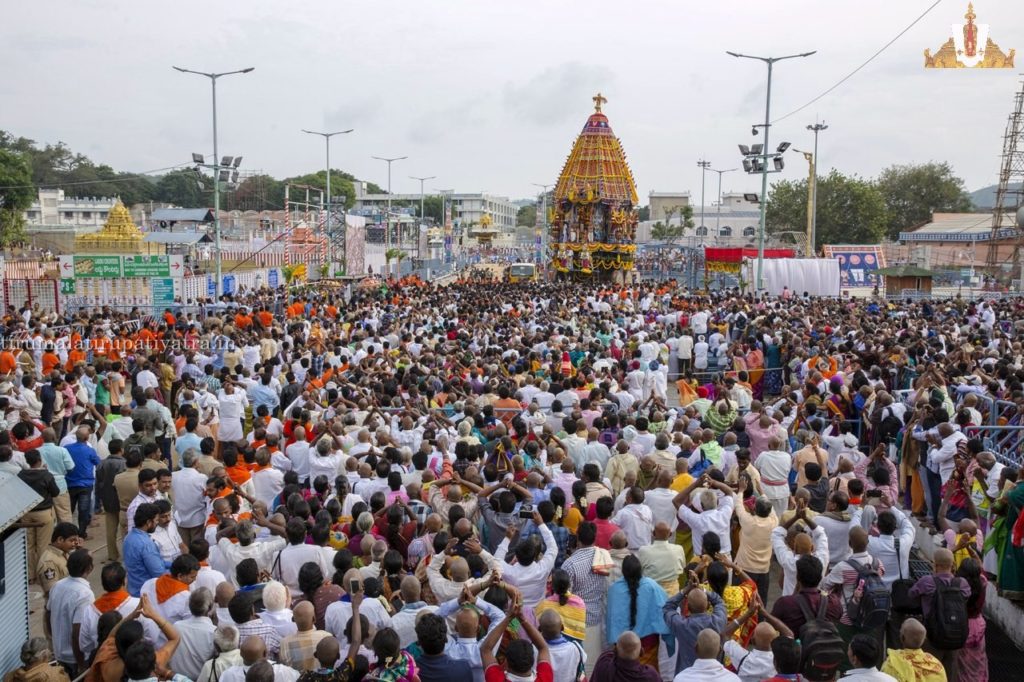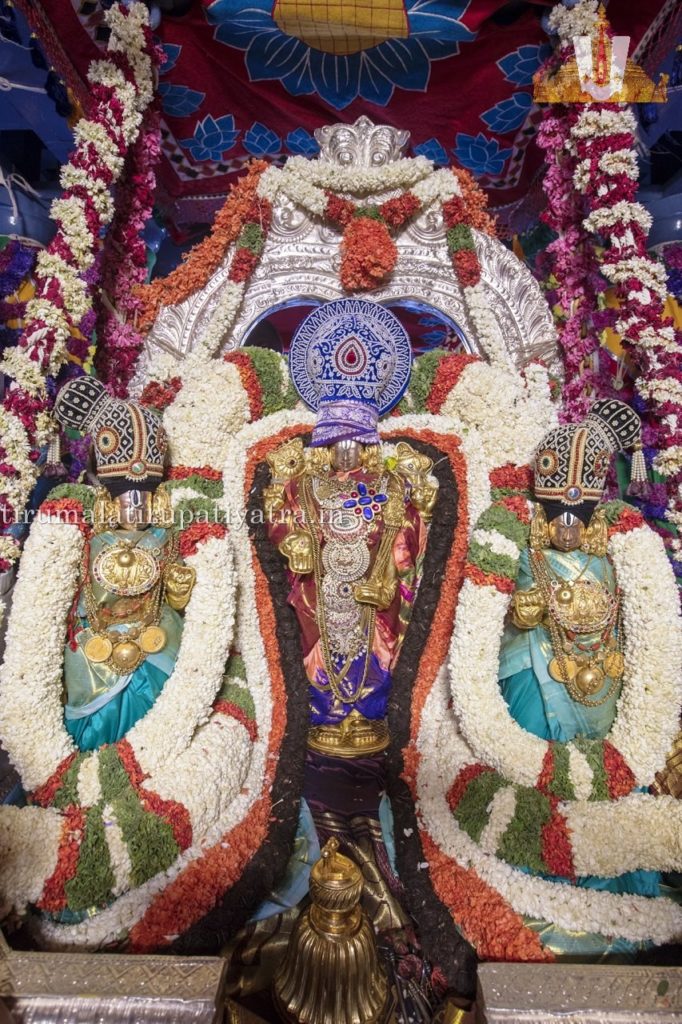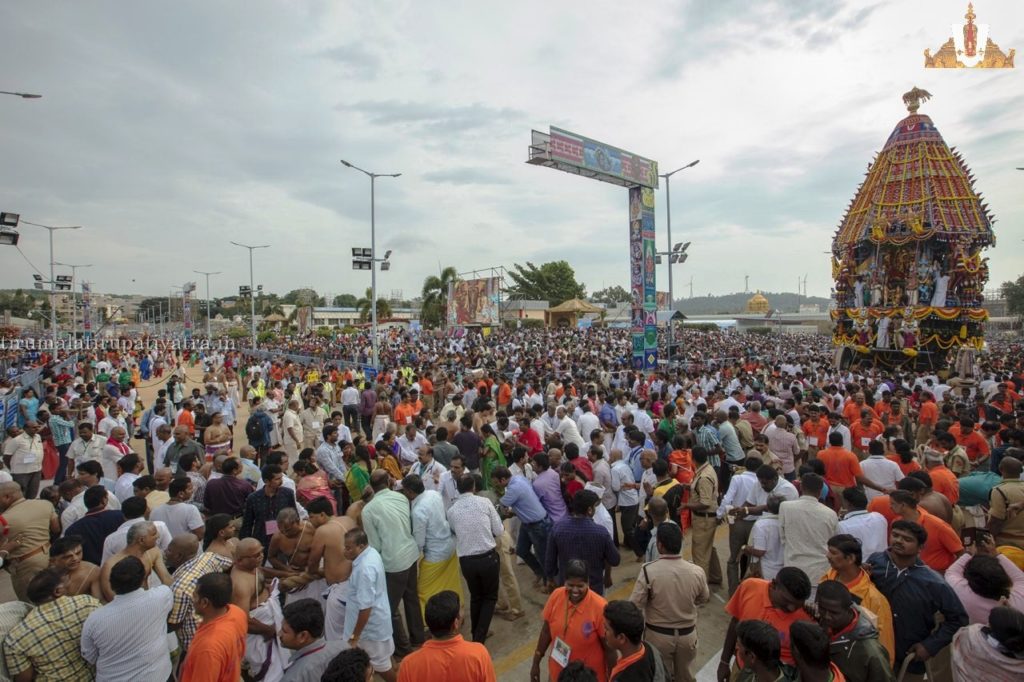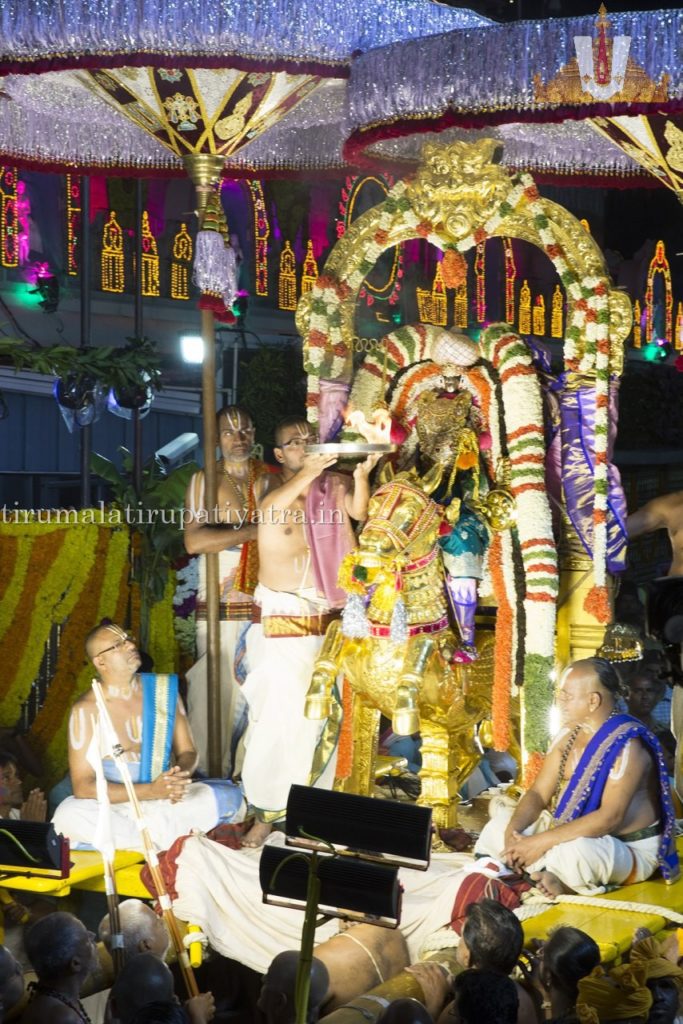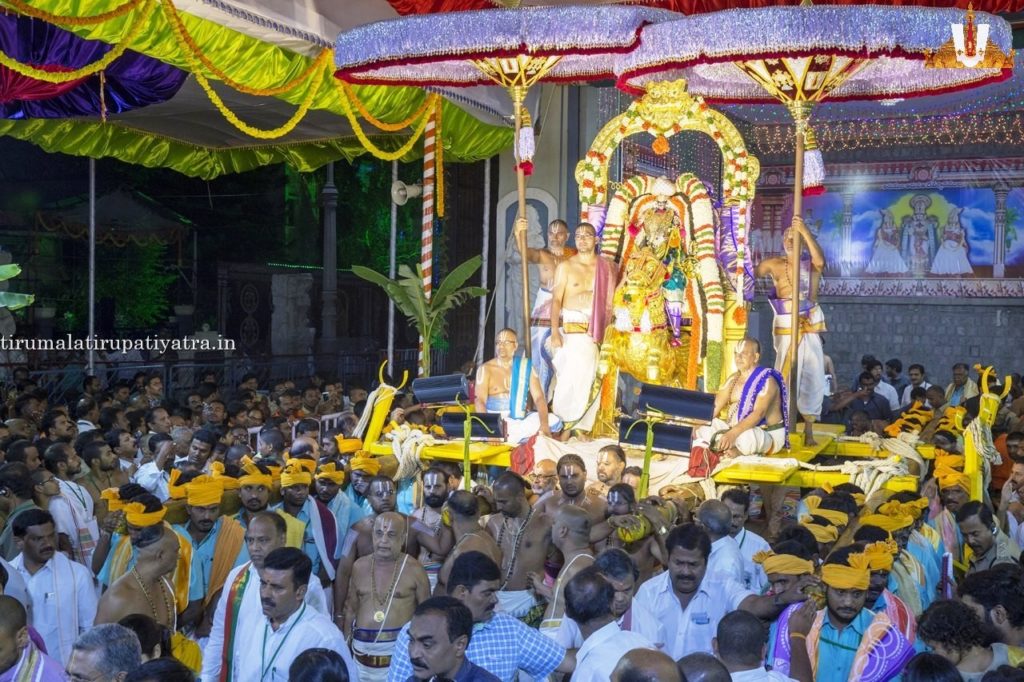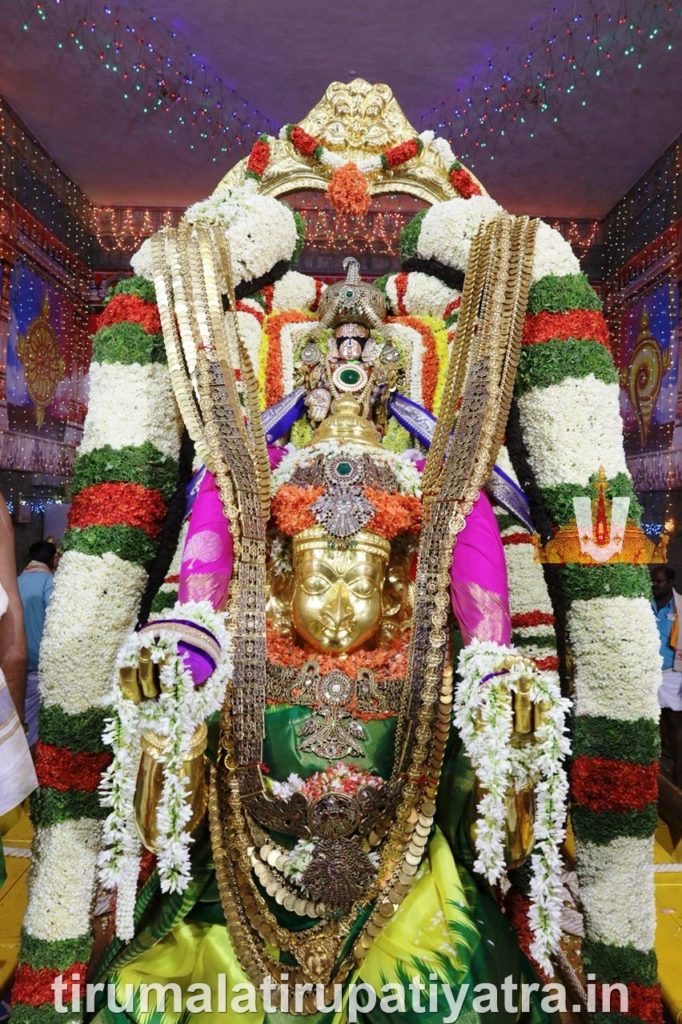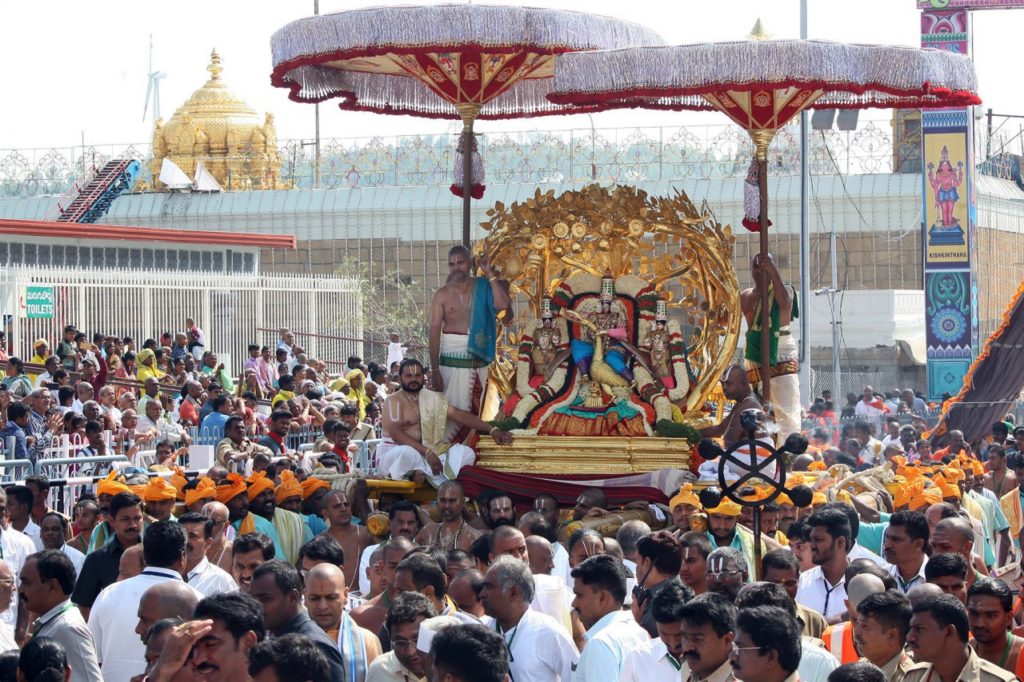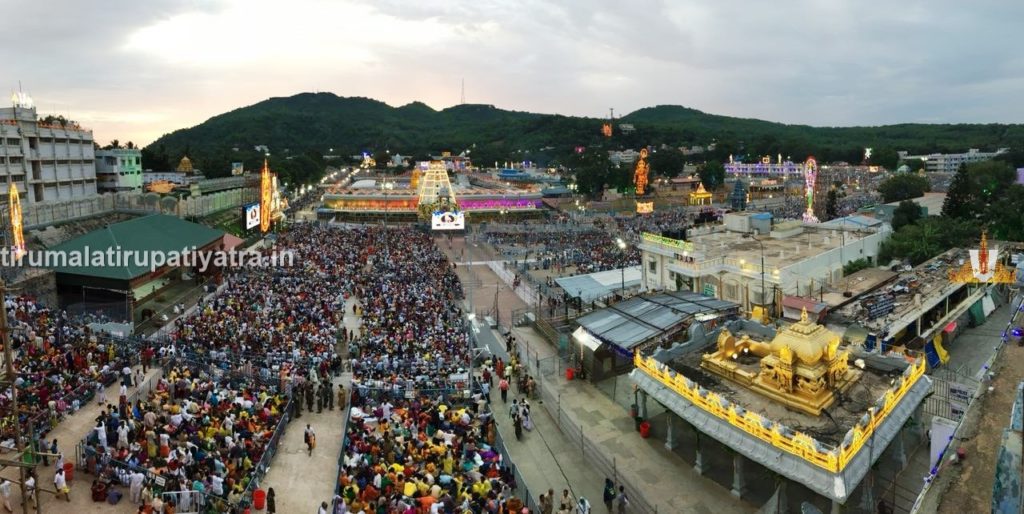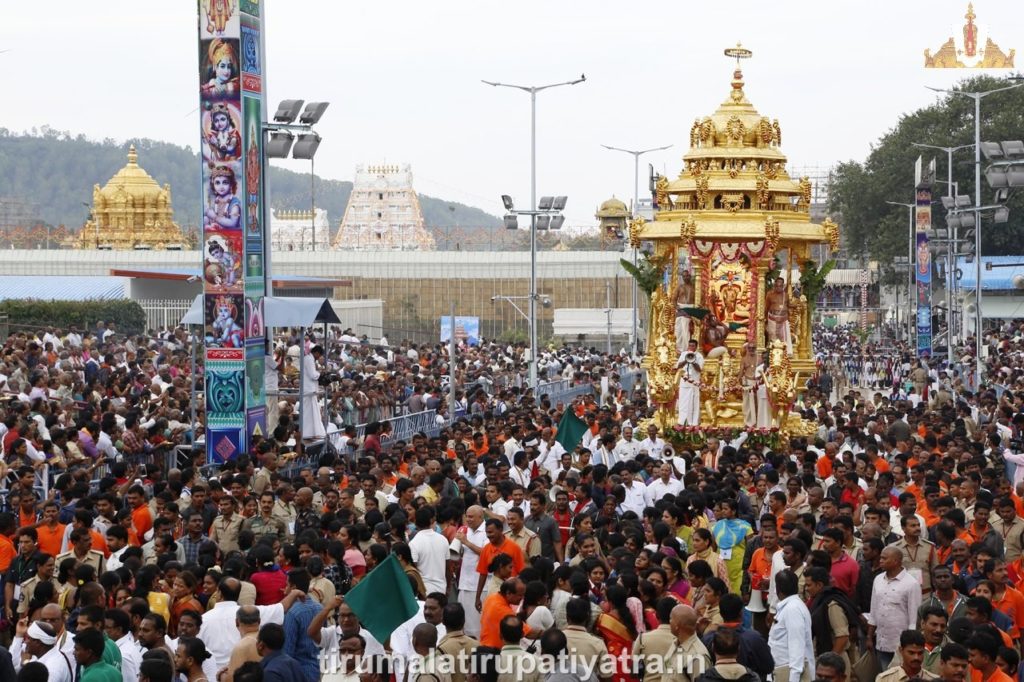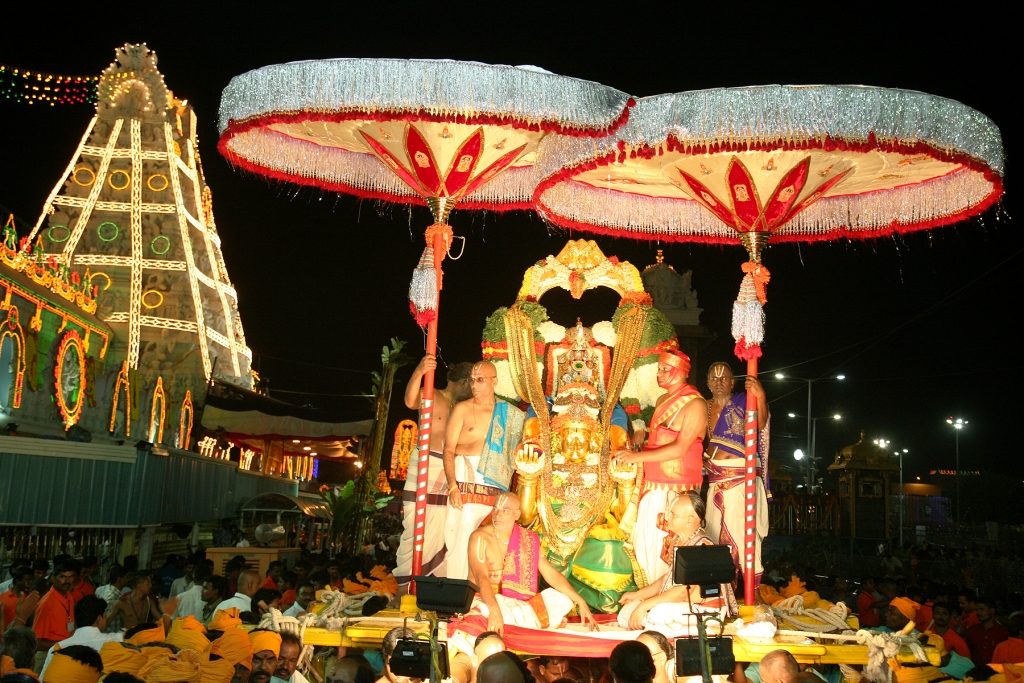There is one ceremony or the other almost daily for Lord Venkateswara manifest on Tirumala.
Different ceremonies are conducted on a grand scale for the Lord with different time frames— daily, fortnightly, monthly, and yearly. Of them, special mention may be made of annual Brahmotsavas.
Devotees go on raptures witnessing the Lord on different carriages and earnestly wait for the earliest opportunity to visit them. Brahmotsavas are conducted twice this year much to their jubilation.
Because of the addition of one month as per the Telugu Calendar, two categories of Brahmotsavas are conducted this year, namely—Salakatla and Navaratri (nine-day).
Garuda Seva – Supreme Lord on Garuda
Garuda’s carriage (Garuda Vahana Seva) occupies the top place on the night of the fifth day of Brahmotsavas. Garuda represents the manifestation of the Vedas, while the Lord is the crown of the Vedas. Thus, their combination is quite holy and auspicious. Devotees throng the place for this ceremony.
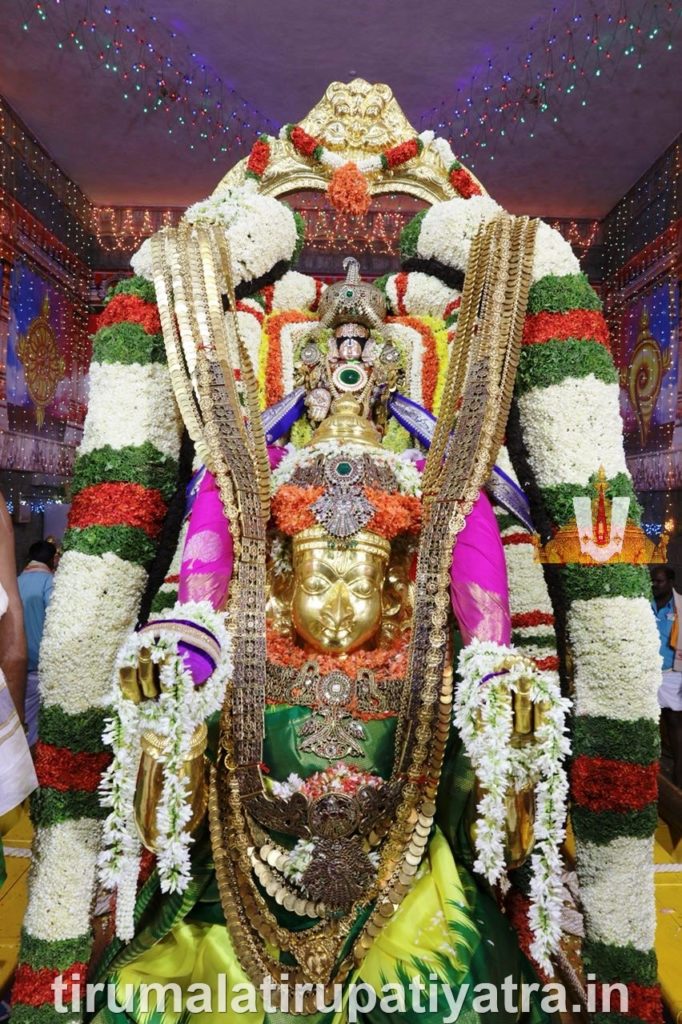
In this ceremony, Malayappa Swami is adorned with the presiding deity’s ornaments like
- Makara kanti (a special chain),
- Lakshmi haram (chain of golden coins with carvings of Lakshmi’s image),
- Venkateswara Sahasranama maala (chain of golden coins with Lord’s thousand names engraved).
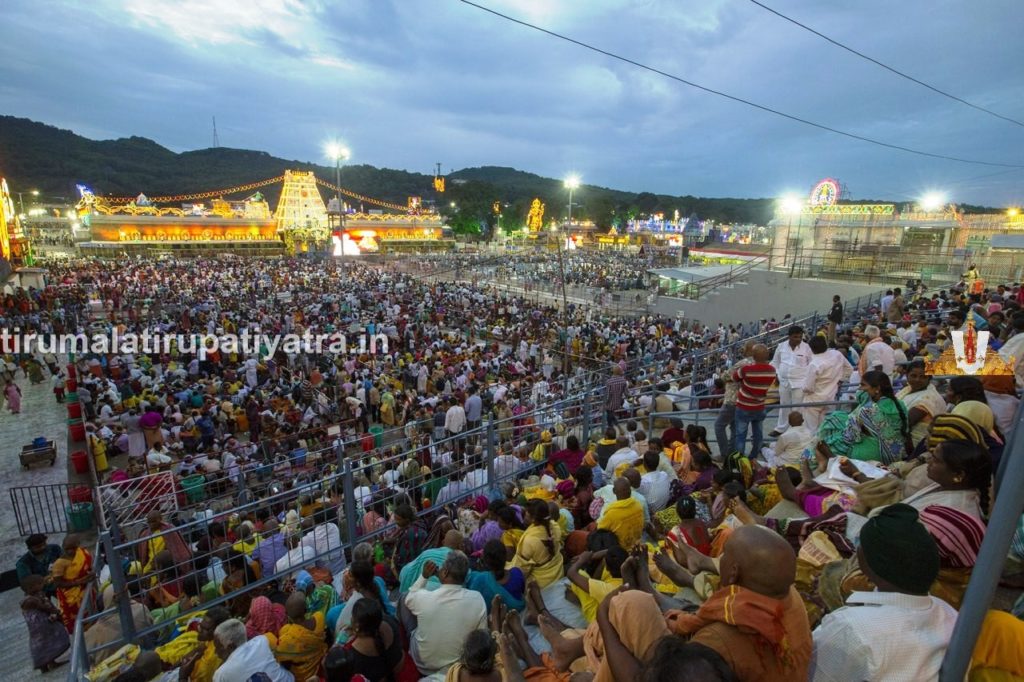
As it is believed that there is no difference between the presiding deity and the processional deity in this ceremony, the Lord’s darshan on Garuda carriage is supposed to be the most auspicious.
On the same day, the garlands worn by Goda Devi are taken in procession from Villiputtur to decorate the Lord of Tirumala.
New umbrellas are also brought on the same day. Thus, the ceremony offers a feast to the eyes with distinguished ornaments, silk garments, and canopies.
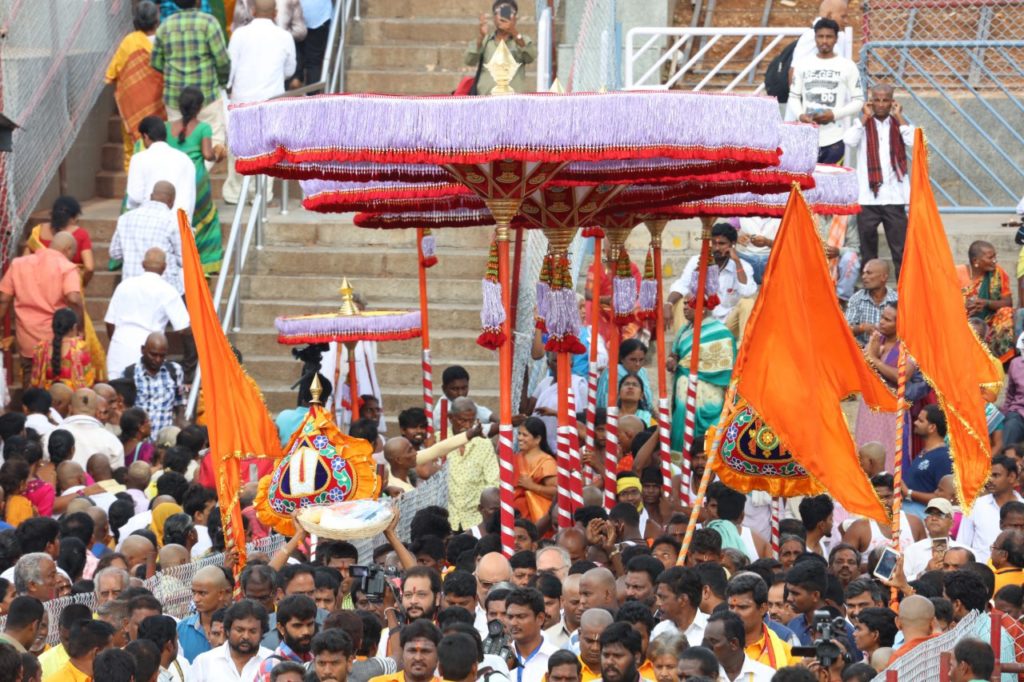
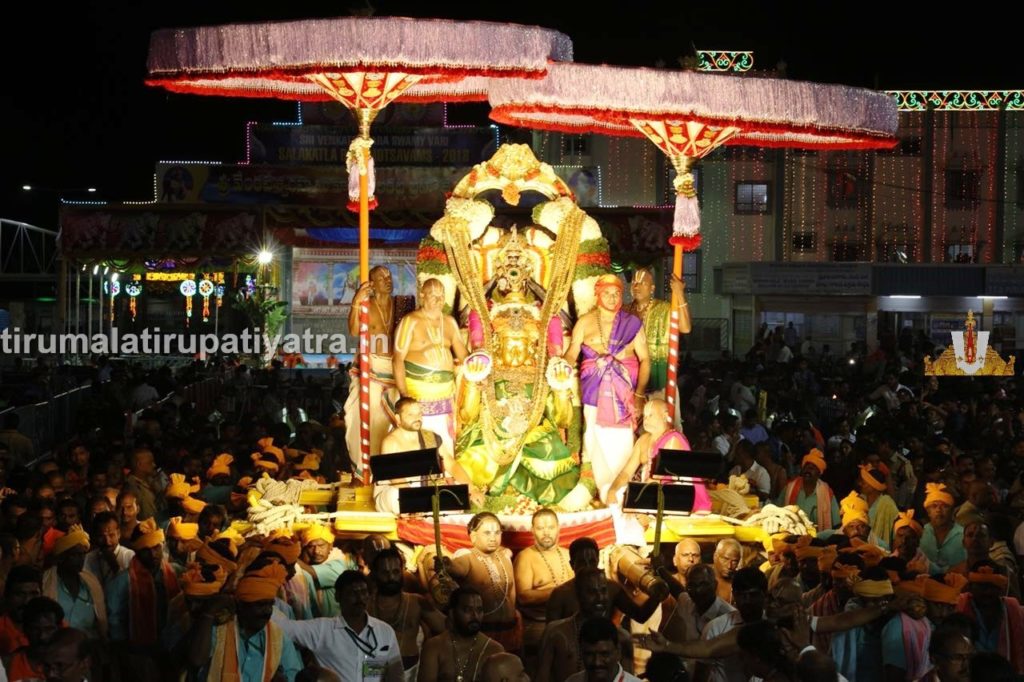
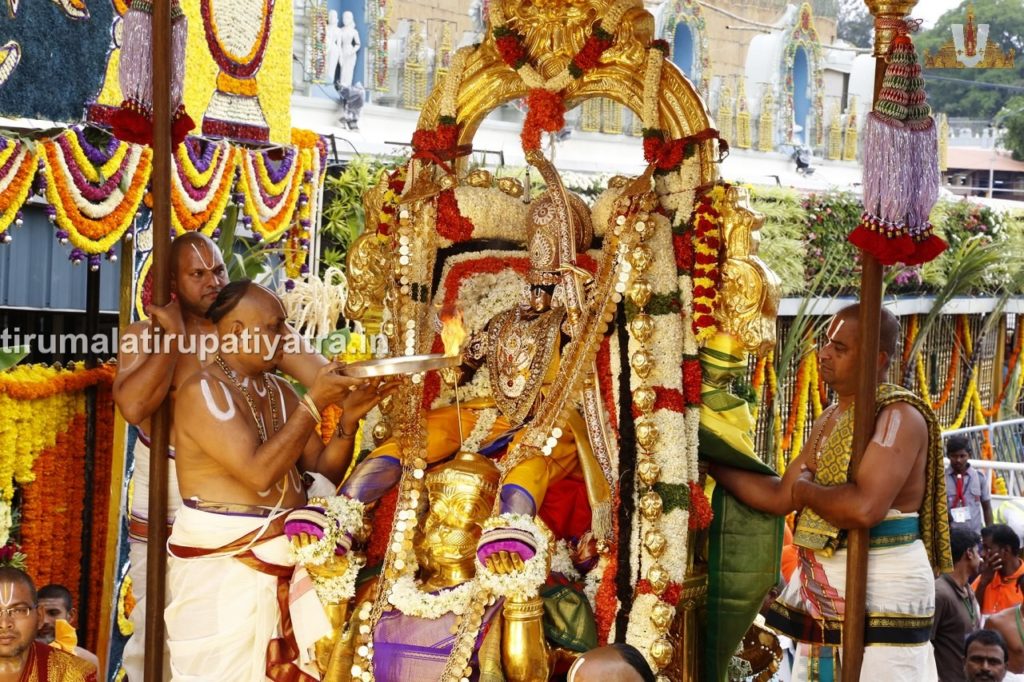
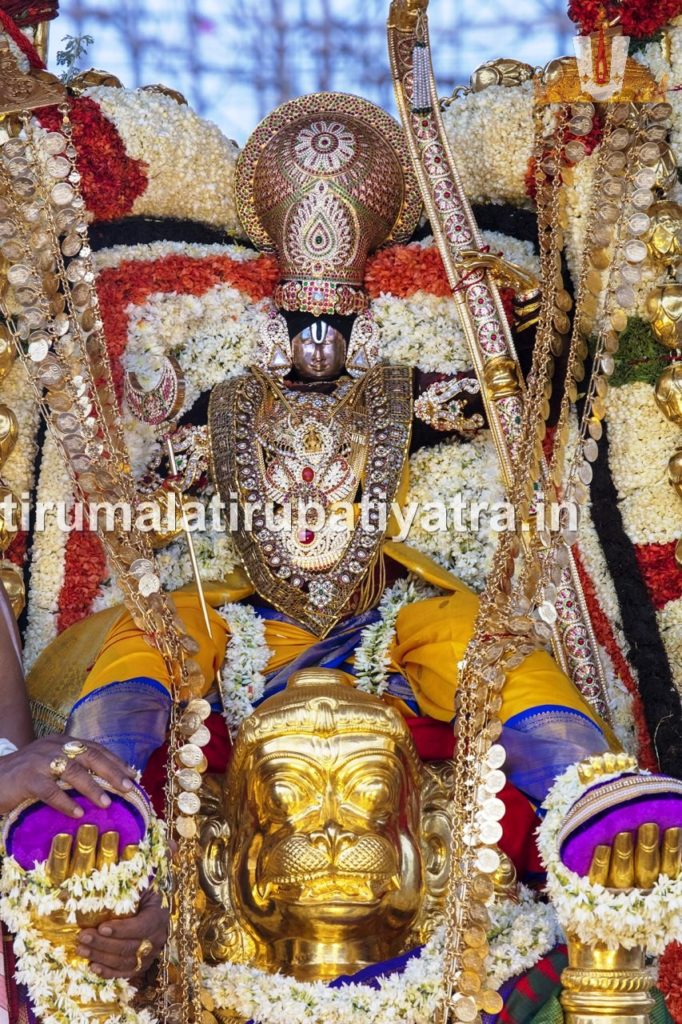 Venkatadri Rama appears as Lord Sri Rama of Tretayuga. In the auspicious waking up ceremony every morning, the Lord is addressed as Rama, the son of Kousalya, in the shloka, “Kousalya supraja rama poorvaa sandhya pravartate.” Hanuman is a symbol of servitude as devotion.
Venkatadri Rama appears as Lord Sri Rama of Tretayuga. In the auspicious waking up ceremony every morning, the Lord is addressed as Rama, the son of Kousalya, in the shloka, “Kousalya supraja rama poorvaa sandhya pravartate.” Hanuman is a symbol of servitude as devotion.